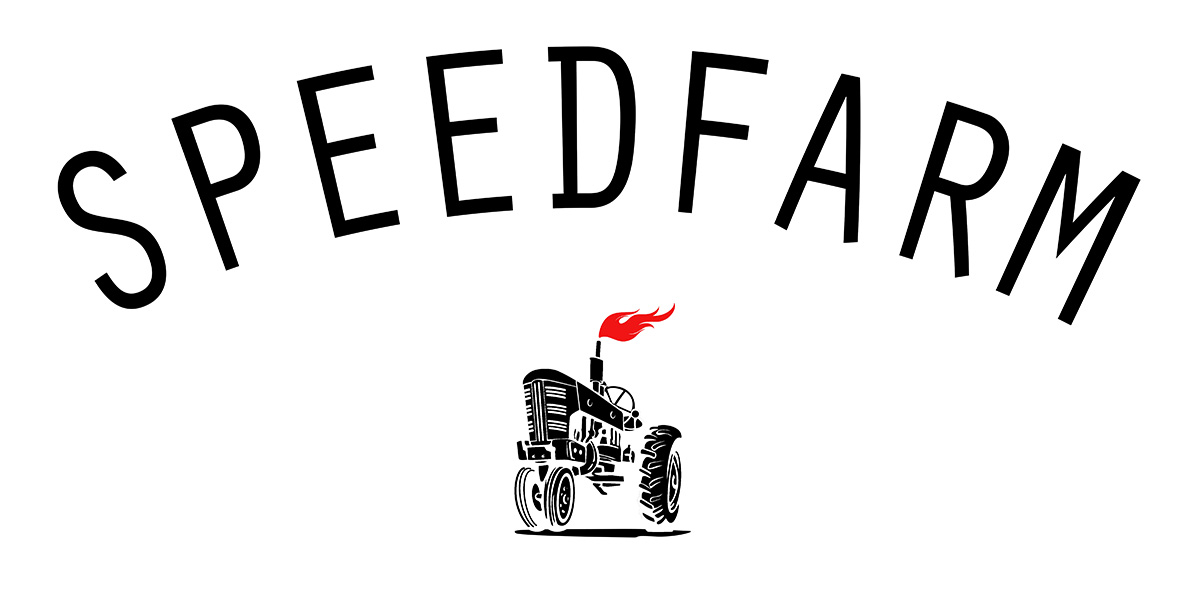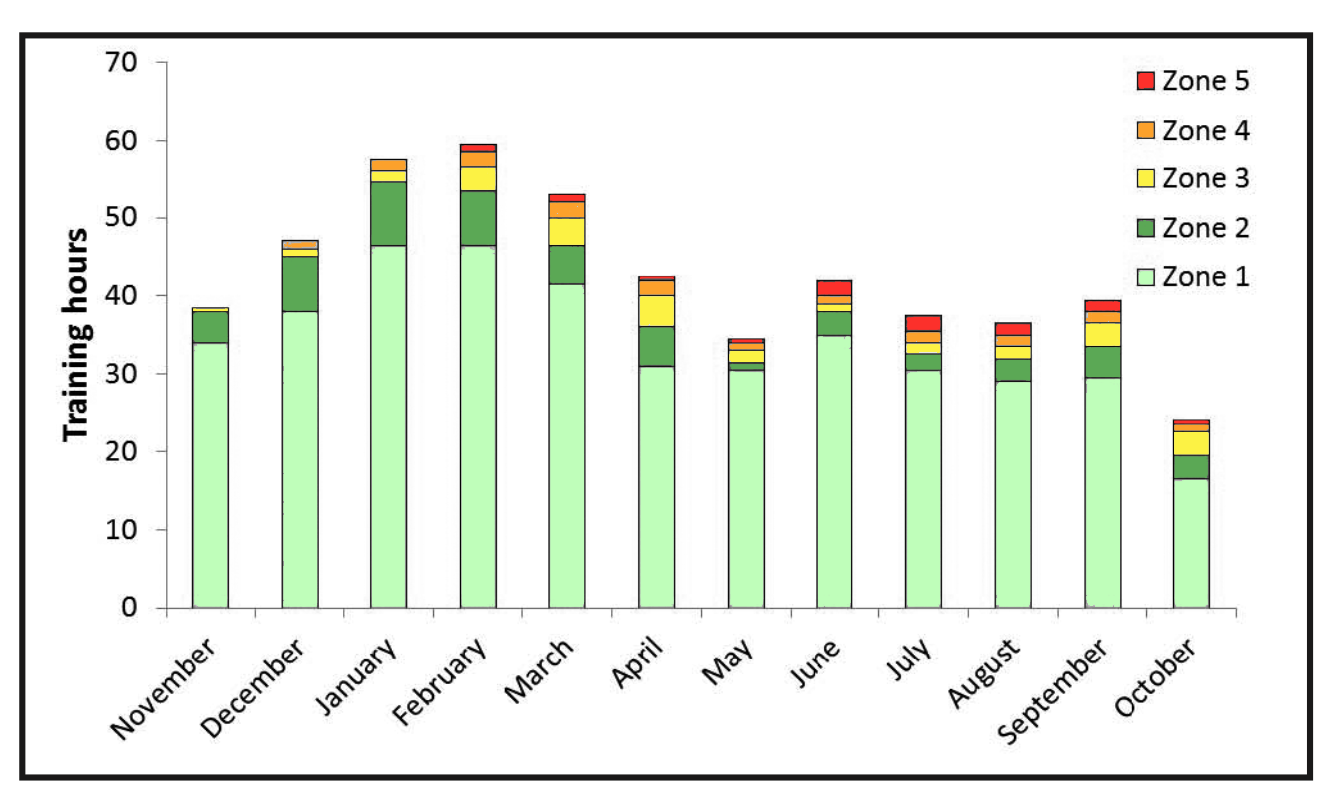As we all know, elite cross country skiiers tend to be lazy, unfit slobs and as such, the training data of Bente Skari presented in the last Almanac post may not be applicable to runners…
So let’s take a quick look at the intensity distribution of a pretty legit athlete, runner Ingrid Kristiansen of Norway during her 1986 season. That season read like this:
April: Boston marathon win (2:24)
July: 10000m world record (30:13)
August: 5000m world record (14:37)
October: Chicago marathon win (2:27)
Fig. 1. Training volume and intensity distribution of world champion distance runner Ingrid Kristiansen during an annual training cycle at the age of 29-30 years, a time when she set world records for 5,000 and 10,000 m (data from Espen Tønnessen).
Clearly, there is a very similar distribution of training zones to Bente Skari with the vast majority of training time spent in Zone 1 (up to 90%). Ingrid spent a bit more relative time in Zone 2 in early season, but note that this upper aerobic training diminished as the season progressed. She swapped some of the “harder mild” running for traditional threshold (yellow) and high intensity (orange and red) work heading towards her major competitions, but did not speed up her easy Zone 1 training by pushing a little harder during this work…a tendency we all have as we strive to get “fitter”!
Even during her peak track competition phase in July and August during which she set the 2 world records, she spent about 84% of her training time in Zone 1 and 89% of her training at easy paces (Zone 1 + Zone 2). To generalize about this key period from May through August, her easy training got easier, and her hard training got harder…with less time spent around threshold and more in Zone 5.
This pattern of training intensity distribution shows time and time again whenever the training of elite endurance athletes are examined carefully.
To quote professor Stephen Seiler:
“The sport arena is quite Darwinian. We might therefore assume that approaches that give a competitive advantage tend to spread while those that do not die out. With this process in mind, it is interesting that emphasis on high training volume through lots of low intensity training is common across sports.”
And to quote the Beastie Boys:
“Slow and low that is the tempo”…

